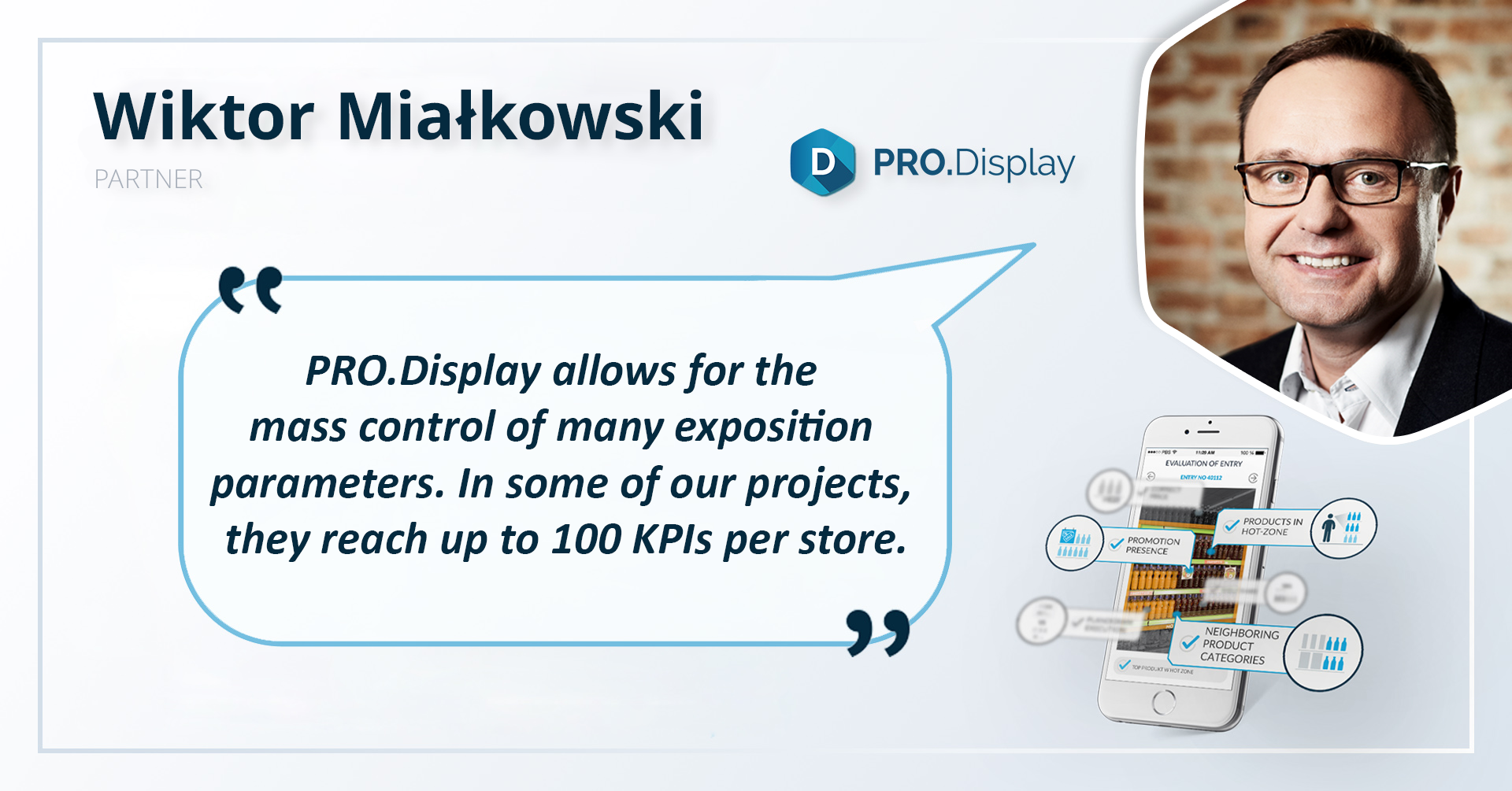Along with the growing financial expectations of retail chains, many of our clients ask themselves:
“Since I have a contract with a retail chain that guarantees the distribution and proper exposition of my products, maybe I should withdraw my sales representatives from its stores as part of P&L optimization?”. This question is perfectly legitimate for at least two reasons:
- the savings involved may restore the margin lost during the negotiations with the chain.
- it is assumed that a sales representative has an ever-decreasing influence on business in retail chains.
One of our clients decided to check the implementation of the conditions of its contract in a supermarket chain where it had previously withdrawn the service of its sales representatives. Those stores were visited by our auditors. They took photos of designated expositions, which were then analyzed by the photo recognition algorithms built into our PRO.Display system. The results were as follows:
- Product distribution:
- The client's TOP 10 products were available in almost 90% of the chain's stores.
- The weakest 5 SKUs were identified in 5% of stores
- However, the biggest challenge turned out to be the quality of additional/promotional expositions, which were contracted for a seasonal period.
- The whole set of products from the promo newsletter was on dedicated display in only 1% of the stores.
- Floor/pallet displays appeared in 36% of the stores.
- The agreed upon POS materials were found in only 10% of the stores.
Getting back to the question many producers are asking themselves: “Since I have a contract with a retail chain that guarantees the distribution and proper exposition of my products, maybe I should withdraw my sales representatives from its stores as part of P&L optimization?” - our answer is backed by many projects we have conducted, and it is as follows:
- Yes, for the most disciplined store chains, such a procedure can be successful.
- However, it requires the introduction of a massive control mechanism in chain stores.
- It is worth adding clauses in the contract conditioning the level of fees depending on the % of confirmed implementation.
- The best-suited tools for such control are systems based on AI algorithms dedicated to photo recognition:
- Such systems allow for the mass control of many exposition parameters (in some of our projects they reach up to 100 KPIs per store).
- The database of analyzed photos is at the same time indisputable evidence of the actual situation in the store. It supports KAMs in difficult conversations with the chains regarding payment based on the "pay for performance" model.
- In many of our projects, we have found that retail chains experiencing this approach have allocated their forces and resources to our clients’ expositions, raising the % of the implementation of contract elements that define distribution and exposition.

